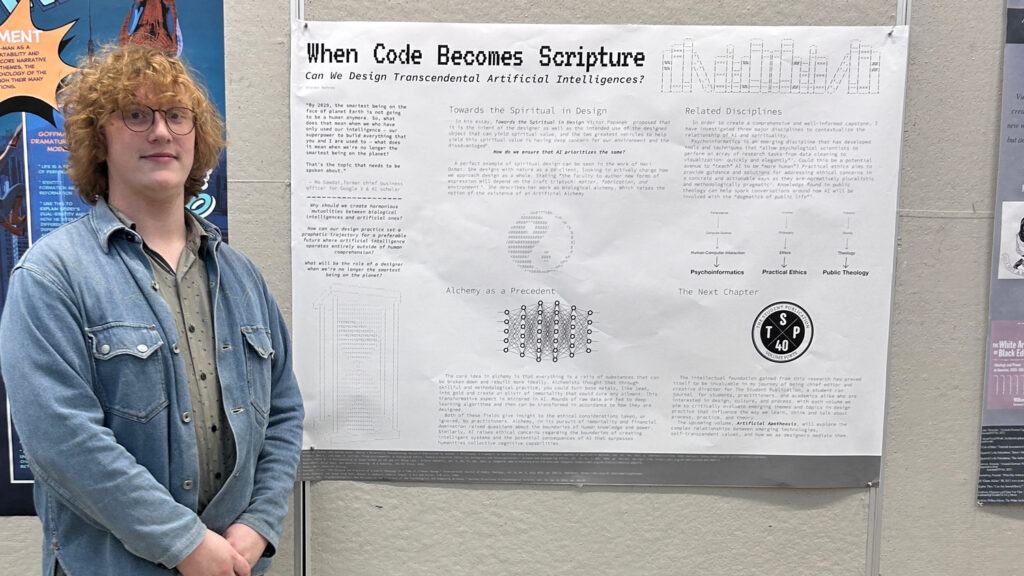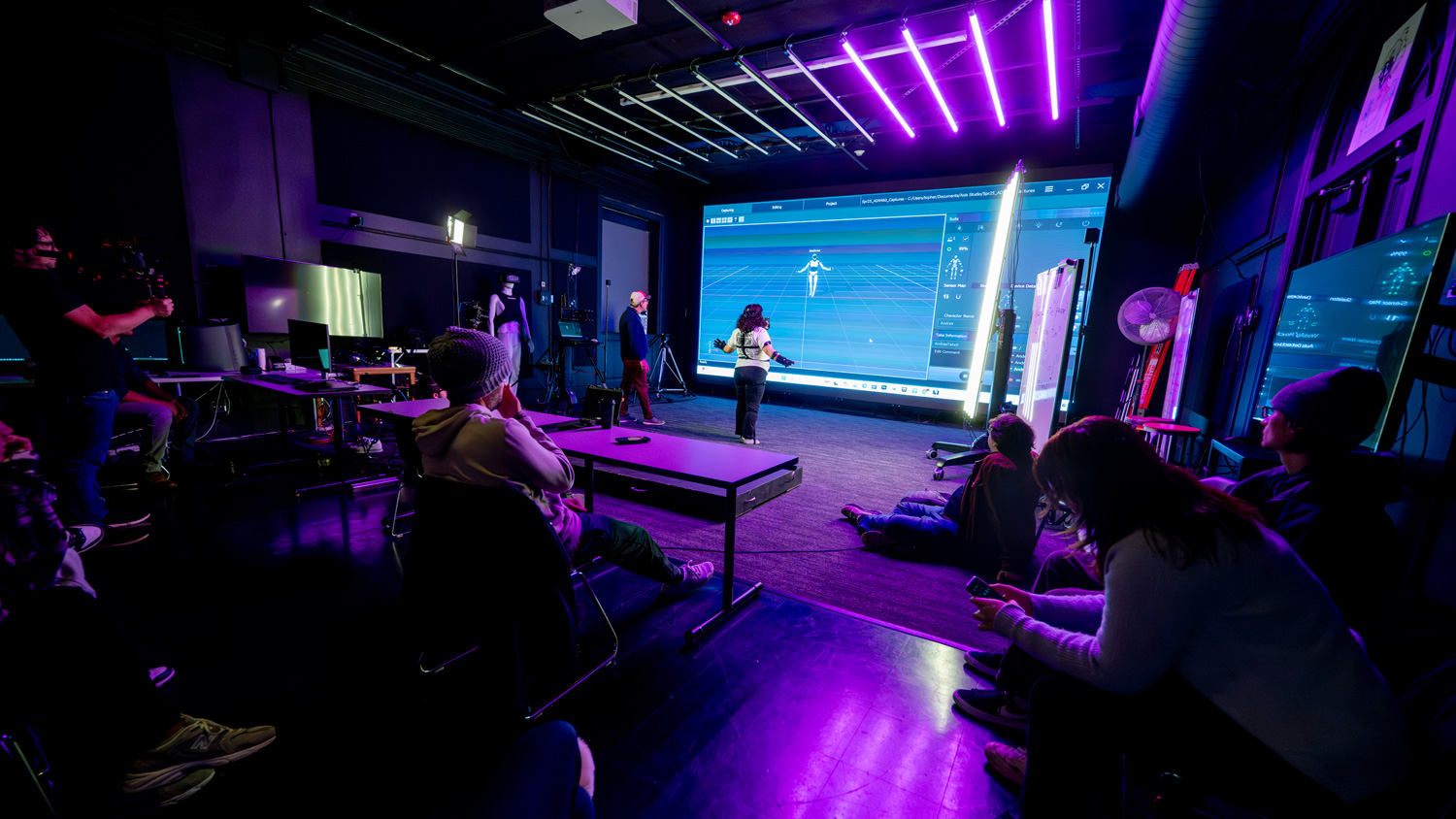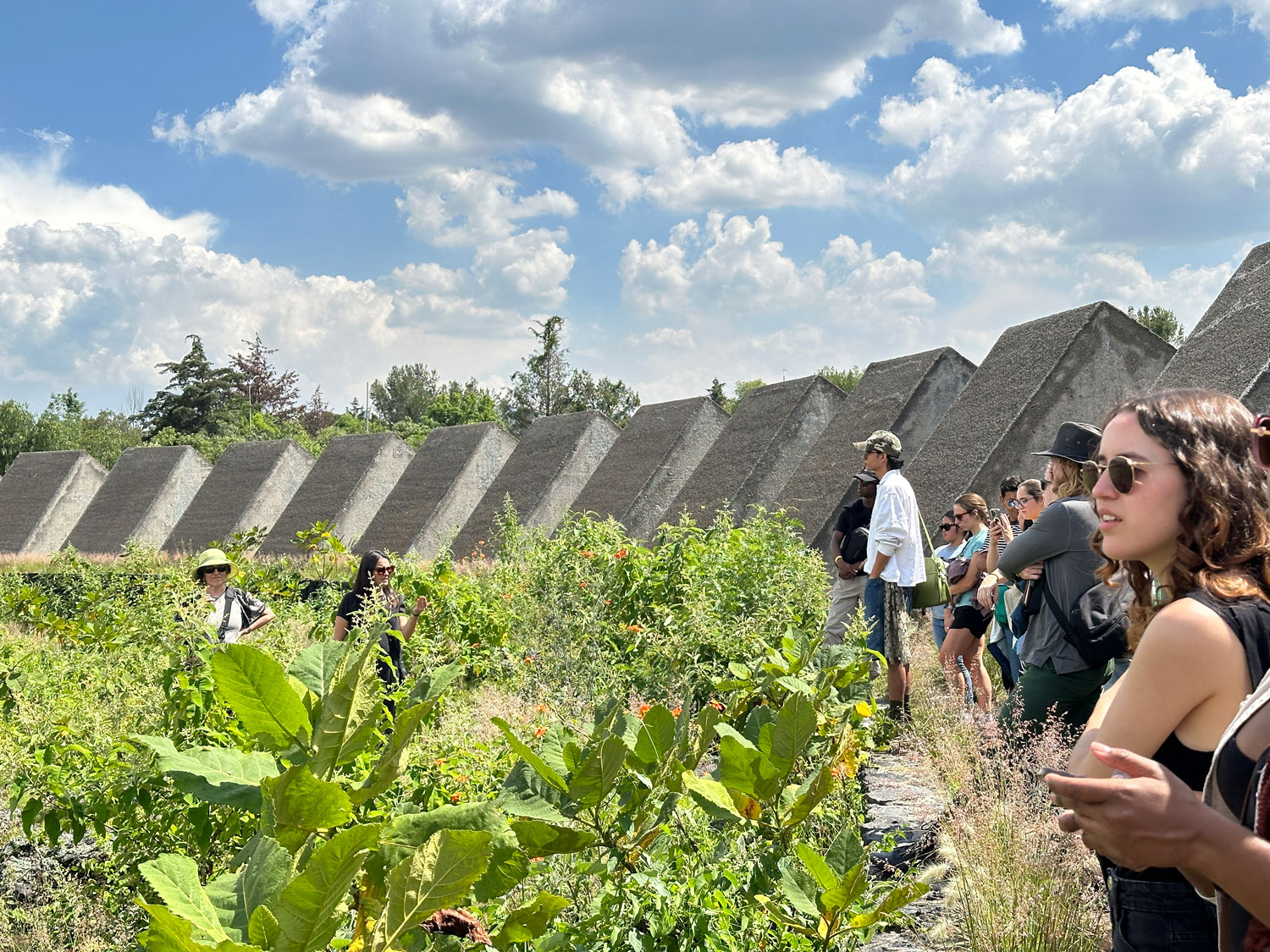Artificial Apotheosis: The Student Publication, Volume 40
This year’s Student Publication, volume 40, explores the intersection of design and spirituality. Editor Steven Nohren dove headfirst into editing the publication as a design studies student, returning full-time after taking a sabbatical during the pandemic. Now, he’s attending talks on AI and approaching professionals to contribute to one of the college’s oldest print media.

Steven Nohren first joined the College of Design as a Design Studies student in 2018 with an interest in curation and museum studies. He stepped away from full-time study during the pandemic and returned this fall to complete his degree as a full-time student.
When two friends backed out of co-editing The Student Publication, Steven saw an opportunity to jump in, challenging the skills he’d acquired as a design student and requiring him to step outside of his comfort zone.
The Student Publication itself has a storied past, going back to the earliest days of the college. From 1950 to the early 1980s, it came out annually or semi-annually, before taking a hiatus. In the early 2000s, the publication saw a resurgence under the advocacy of Dean Marvin Malecha, who fundraised heavily to create an endowment to support the publication’s production. Students would become interested in a topic, and manage all aspects of the publication’s production and distribution. “We always encouraged students to challenge the status quo,” said Tania Allen, associate professor and director of graduate programs for media arts, design and technology and faculty advisor for The Student Publication.
With Allen as its advisor, the college explored producing the publication as part of a class, exploring all aspects of writing, design, and production, with the core focus of soliciting writings from established designers. Now it’s back to an independent student group with Steven as editor at the helm.

Early on, he identified the core concept – Artificial Apotheosis– exploring the convergence of the design world and 21st-century technologies, ranging from cyberspace, synthetic biology, generative code and predominantly artificial intelligence. Pulling inspiration from Victor Papanek’s essay Towards the Spiritual in Design, he wanted to question how these fields of design and technology can be used to transcend the material and embody spiritual values; namely having a deep concern for our environments and the most vulnerable in our society. “There’s currently a lot of angst about where design is headed,” Nohren says. “Frankly, I think we’re in a renaissance of design and the potential of designers. My peers and fellow professionals are worried about when AI supersedes design and this issue is interested in exploring the ways our roles will inevitably shift.”
Once the core concept was formed, Steven took his pitch on the road – attending talks on AI, going up to past conference panelists and describing the publication, “showing up and shaking hands,” he says. From his outreach, he’s formed a core cohort of professionals to contribute essays.
On campus, he’s working with students on the nitty-gritty of production – soliciting graphic designers and editors, exploring budget and production timelines, and dreaming up distribution networks.
“The thing that’s really interesting about this cohort,” says Allen, “is that they’re pushing it further than in the past – exploring ways that AI can be used to generate content for the publication itself. Utilizing AI tools for brainstorming, ideation, and content creation, they’re working hand in hand with these technologies to further the work.”
Nohren says the project has challenged him academically, socially, professionally and emotionally. He struggles with translating the immaterial subjects and nonphysical themes into compelling visuals for the 75+ page book. It’s all worth it to see his creative vision become embedded within the college’s history, cataloged in its archives as representative of a moment in time.
As of now, it’s a race against the clock to complete the work before his graduation in May. “I’ve been trying to tell myself, you get there when you get there,” he says. He hopes the publication permeates throughout the college, and is taken by future students as they complete their admissions tours.
“I want to open some eyes and some hearts to new ways of thinking. And if one person who reads it feels that way, I think my job is done. I want it to be conversational – I’ve been given an incredible platform and I want to do something with it.”

- Categories:


